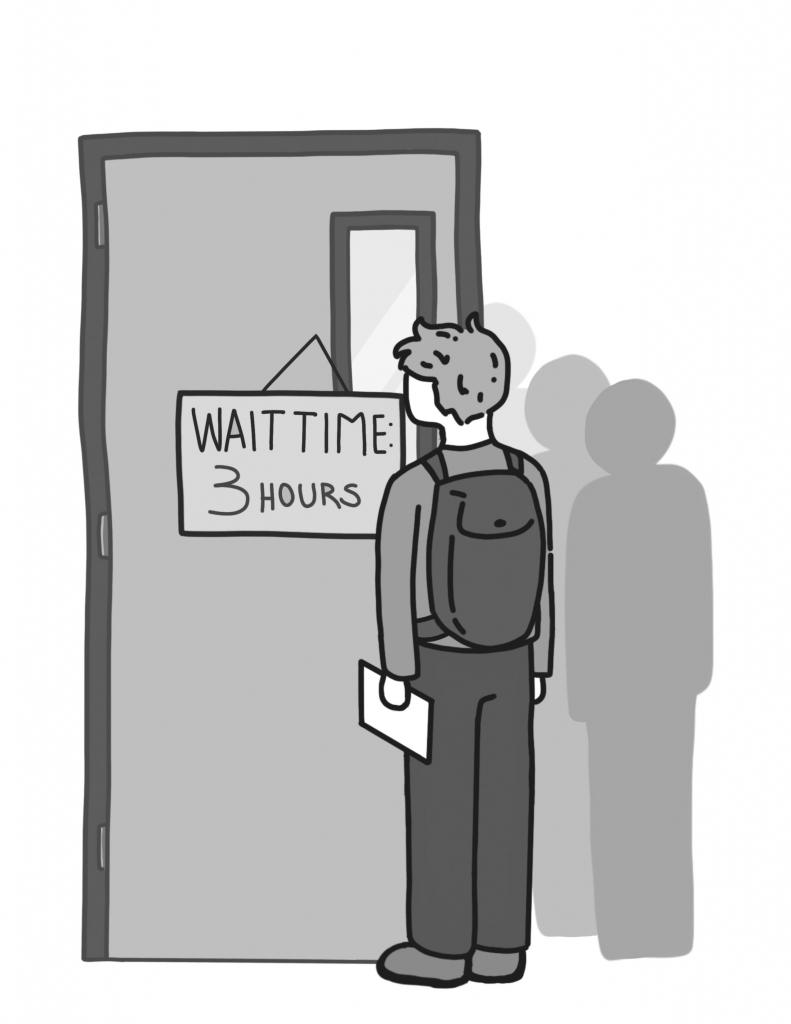The guidance department’s move into the library puts students in close proximity to the department and its counselors. However, as the 2019-20 school year comes into full swing, it seems as if there are just as many students frustrated with the lack of accessibility to counselors.
One way to improve accessibility to the guidance team is to allow appointments to be made during brunch and lunch, and before and after school instead of the current first -come-first-served system. One of the most frequent issues students face is not being able to meet with their counselor when they drop by the guidance office, often having to wait in the lobby for an unspecified amount of time. This can result in students waiting for the entirety of lunch or Tutorial for a short conversation, while a meeting with a single student may take up an entire brunch or lunch period.
Earlier this year, junior Charlotte Kim visited the guidance office to change her class schedule. Even after the two week period for changing schedules had passed, Kim spent her entire Tutorial waiting in line due to a single student occupying the entire 40 minute period.
“I had to come back the next day so I came early in the morning, and I finally got to talk to her. But that’s just really annoying that you have to wait so long and there are so many students for one counselor.”
Story continues below advertisement— Charlotte Kim, junior
According to Selene Singares, the guidance counselor for the Class of 2021, counselors do not make appointments before school, during brunch and lunch, and after school so that students can drop in for meetings. Despite its positive goal, this rule may be limiting accessibility rather than increasing it. Students who do not have preps or students who have after school and lunch commitments may be unable to wait for their meetings. With an appointment, students are able to form a more concrete schedule by knowing when they must be at the office and the approximate time their meeting will take. However, the guidance team is constantly attending to various different issues and duties, and may be overloaded with tasks due to the number of responsibilities they hold.
In addition to individual drop-in and scheduled student meetings, guidance counselors attend every IEP and 504 meeting for their students and have weekly meetings with other staff. The large number of tasks delegated to a small number of counselors makes finding time to meet with students difficult.
The inaccessibility of counselors may be attributable to the increasing number of students in each grade. Ten years ago, Paly had approximately 1600 students. Now, the student body is over 2,000 people and the Class of 2023 is the largest freshman class on record. Despite the significant growth in the student body, the number of guidance counselors has remained at one per grade.
Ten years ago, Paly had approximately 1600 students. Now, the student body is over 2400 people. As the school population grows, the staff and facilities should grow with it.
Each year Paly is assigned a number of counselors the school is able to hire, based on the school district’s ratio of one guidance counselor for every 300 students, according to Assistant Principal Jerry Berkson. In addition, Paly has two College and Career Center counselors, as well as a bridge/outreach counselor. Because of this, Berkson says the school is unable to hire more grade-level guidance counselors as the Guidance Department’s budget has been reached.
Although some may become discouraged after various failed attempts at reaching their counselor, Singares encourages students to keep coming into the office.
“Do not let it go,” Singares said. “Sending me an email, leaving me a note [will help] … Just always come back to guidance and check.”
Every year, the Guidance Department is overwhelmed with students trying to change courses and lanes and class periods. Implementing a few more methods for efficiency and accessibility has the potential to relieve a lot of stress for both students and counselors.
Art by Samantha Ho





